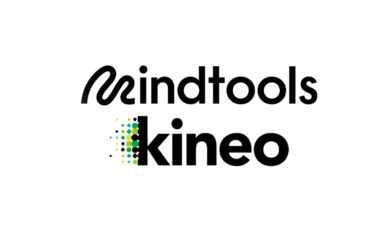The pandemic shook up our lives and prompted a rethink for many of us. For author and entrepreneur Faisal Hoque, it led to a new book: “LIFT: Fostering the Leader in You Amid Revolutionary Global Change.”
Hoque realized that the disruption caused by COVID-19 was one of four huge changes we’re experiencing at the moment, the others being climate change, technological advances, and misinformation. To navigate these choppy waters, he advocates transformational leadership, combined with systemic thinking and experiential learning.
When I spoke to Hoque for the latest Mind Tools Expert Interview, he explained that his theories stretch back to his childhood in Bangladesh, a country where drought and flooding often threaten the lives of millions.
He grew up adapting to constant change, a skill that helped him thrive despite a series of personal setbacks in later life, and that he has successfully translated to the world of work through his writing and consultancy.
Transformation Through Experience
Transformational leaders are driven “by empathy, inspiration and influence,” Hoque says. And in this clip from our conversation, he shows how experiential learning and transformational leadership are linked.
(There’s lots more about transformational leadership on Mind Tools, including its history, and advice on how to become a transformational leader.)
Command and Control Is Dead
Hoque points out that this type of leader stands in stark contrast to the “transactional” leaders more common in the past, who are “all about the bottom line” and drive “maximum return with minimal investments.”
This sounds like the owner of a business magazine I worked for in New York – a man named Arthur. He led our small team from the top down, literally! He worked in a top-floor office and never showed his face in editorial, two floors below.

Rachel Salaman
Although we only knew him from photos, we had to comply with his frequent diktats. For example, all women had to wear skirts and “feminine” shoes, and there was a minimum number of hours we had to spend at our desks, regardless of our workloads.
Unsurprisingly, morale was low and mutiny was simmering. And staff turnover was high, which added to stress levels. Whenever someone quit, other people were lumbered with their work, or were sidetracked by the search for their replacement.
If he’d noticed these negatives, Arthur would likely have doubled down on his command-and-control approach.
Empathy Plus Process Wins
People often think leadership comes in mutually exclusive shades. You can either be firm and process-driven, or open and empathetic. Being both doesn’t seem viable.
But for Hoque, transformational leadership can work hand-in-hand with a rigorous business-centric mindset. In fact, each one enhances the other.
“If you think about transformational leadership, it’s kind of your cultural element and your guiding post to get people rallied behind you,” he says. “Then you have to give people the exact path… a combination of process, tracking and management, matrix and measurement that makes sure that things are actually getting done.”
This approach was modeled brilliantly by a radio news editor I had early in my career, a woman called Juliet. Unlike Arthur, she didn’t give a hoot what we wore, as long as it fitted our assignments for that day.
She sat in the newsroom with us, writing news items and broadcasting bulletins. Despite being busy, she always made time to answer the many questions from her keen yet inexperienced team – with proper focus and engagement.
I remember one morning, I arrived for the early shift at 5 a.m. and a huge news story had broken in our patch overnight. I was alone in the newsroom and I didn’t know what to do. So I rang Juliet at home.
Calmly, she listened to the police report I’d picked up, and then coached me toward the best way to cover the story.
Empowered by her input, I verified the facts, tracked down a witness, recorded an interview, and wrote up the story, with audio clips. It led the morning bulletins – and we were way ahead of the local competition.
Approachable Leadership Transforms
Looking back, what impresses me is not just Juliet’s sound and helpful response. It’s that she was available to talk at 5 a.m. – and that I felt I could wake her up for advice.
She’d created a well-run, professional environment where people outperformed expectations, and she’d done it with empathy and understanding, so that people felt safe to ask for help.
Leaders in other industries may never be woken at dawn by a rookie colleague. But being truly available to team members during office hours could make a big difference to the success of the organization, especially now. Turbulent times call for calm, thoughtful leadership.
“It’s that conscious practice of empathy, to listen and to understand where people are coming from, and as a result, designing your work environment and your way forward,” Hoque says. “[That] becomes monumental if you want to succeed.”
Get the Full Interview – and Many More!
Mind Tools Club members and Mind Tools for Business licensees can listen to my full 30-minute interview with Faisal Hoque. It comes with a complete transcript for ease of review and accessibility.
If you’re not already signed up, join the Mind Tools Club now to gain unlimited access to 2,400+ resources, including our back catalog of 200+ audio Expert Interviews. And to find out more about Mind Tools’ enterprise solutions, you can book a demo with one of our team.
Meanwhile, you can read and hear more, for free, by searching the Expert Interview blog topic and by signing up to the new Mind Tools Expert Voices podcast.
Your Opinion on Transformational Leadership
How do you lead and manage in turbulent times? What style of leadership does your organization enable and encourage, and what’s the impact? Share your experiences and tips in the Comments, below!




